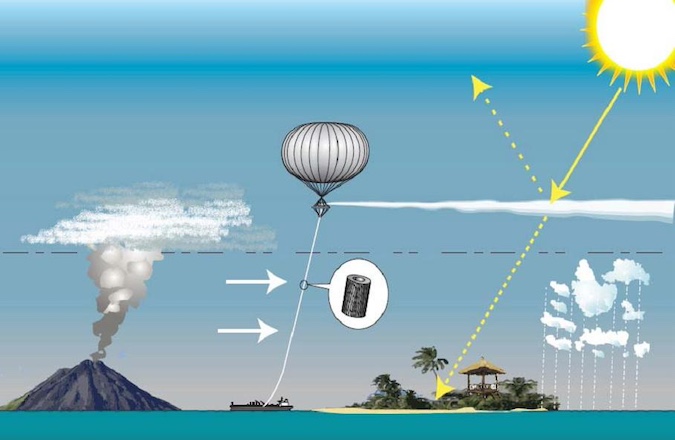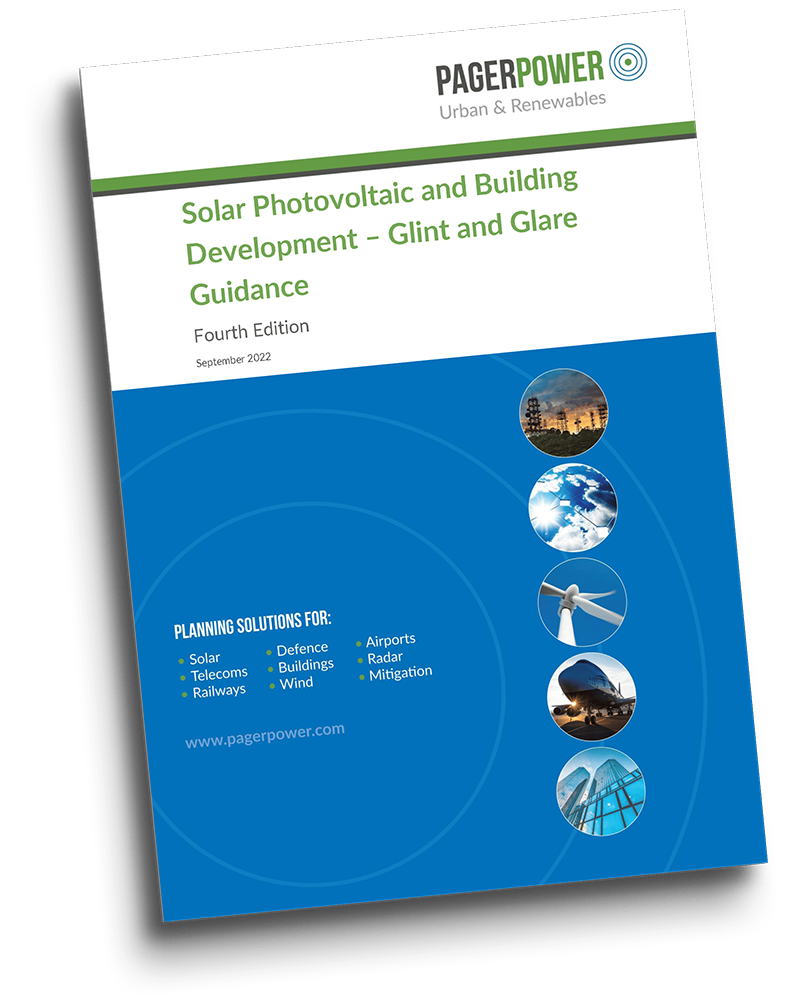Solar PV and Radar Interference

Pager Power has extensive experience modelling the impact of wind farms and building developments on radar systems. These obstructions can block radar signals and in the case of wind turbines, create false targets, radar clutter and produce shadowing effects.
More recently, concerns have been raised by some parties regarding the potential for solar farms to interfere with radar and other Communications, Navigation and Surveillance (CNS) systems, when in close proximity to aerodromes. Whilst solar farms are less likely to cause interference than wind farms or buildings, there are several mechanisms by which solar farms could theoretically cause radar interference.
Electromagnetic Interference
Inverters and other electrical equipment within a solar farm will produce electromagnetic fields which could interfere with sensitive radar equipment. Electromagnetic fields decrease in strength by a square-root law, and therefore rapidly diminish as a receptor moves further from the source; as such, effects are only likely to be significant where sources of electromagnetic fields are located in close proximity to CNS equipment.
A study by the National Renewable Energy Laboratory (NREL) in the USA concludes that [2]:
“With diligent procurement and siting of PV systems, including specifications for FCC Part 15 Class A compliant equipment and a 250-foot setback from communication equipment, NREL anticipates little to no EMI impact on nearby communications or telemetry equipment.”
Previous on-airfield solar projects in the US have utilised setback distances of 250-500ft in order to resolve concerns regarding EMI and CNS equipment. In the absence of further studies, it is considered that a 500ft (152.4m) setback would be sufficient to reduce EMFs from solar inverters to below background radiation levels and avoid significant impacts on CNS equipment.
Thermal Plume
Solar panels are designed to absorb as much sunlight as possible and transfer this to electrical energy, however panels are not perfectly efficient and therefore heat up in the Sun. This may cause an increase in air temperature over the solar panels. Changes in atmospheric conditions can affect the refractive index and alter the effective Earth radius for electromagnetic transmissions such as radar signals. This could therefore cause an aircraft to appear in a different location than it actually is, but how big a difference?
The International Telecommunication Union (ITU) has produced documents which allow these effects to be calculated for a given change in air temperature and atmospheric conditions (ambient air temperature and humidity) [3][4].
In practice, these effects are likely to be minor (a change in air temperature of 1 degree would cause a change of approximately 1-2m to the position of an aircraft, at a distance of 100km from a radar). Effects are also less sensitive the closer an aircraft is to the affected radar, which is likely to be the more sensitive operational areas near an aerodrome.
Radar Shadowing
Solar panels can also act as a physical obstacle to radar returns, as would be the case for building developments or any other obstruction which would block radar signals. Solar panels are less likely to significantly obstruct radar in this manner, due to the low-lying nature of solar farms, however impacts are possible particularly where solar PV is located above a radar or at a blocking point i.e. the location at which terrain intercepts the broadcast radar signal at its lowest theoretical scanning elevation.
In order for any effect to be possible, the radar must have direct line-of-sight to the solar panels. Effects are likely to be deemed significant only where the obstruction would cause a shadow which would obstruct radar returns from significant areas of operational airspace and may cause aircraft to not show on radar displays.
Radar Reflections
If a solar farm is within line-of-sight to a solar farm, it is also theoretically possible that radar returns can be reflected off the panels before reaching the radar. This could result in significant discrepancies in the perceived location of aircraft and produce clutter on the radar display. In practice, this would only occur for aircraft at specific locations, due to the geometry of reflections, and reflected rays would be less intense than direct returns. It is also likely that reflections already occur on some scale from a variety of surfaces near the radar.
Radar reflections are also typically more of a concern for Secondary Surveillance Radar, as opposed to Primary Surveillance Radar, but any level of impact is likely to be decided predominantly based on the geographic relationship between the radar, solar panels and aircraft in the airspace above.
Summary
Impacts from solar farms upon radar may be possible under very specific circumstances, where solar farms are in close proximity to radar equipment. Early consultation with aviation stakeholders may help to identify these issues early and enable analysis to determine the extent of any impacts.
Pager Power
Pager Power has experience with a wide variety of aviation safeguarding services and can assist in resolving aviation objections. This experience includes constructing Building Restricted Areas around CNS equipment at airports around the world to determine whether they could be impacted by new obstacles.
If you are working on a project where concerns have been raised regarding solar PV development in relation to radar and other CNS equipment, please reach out on +44 01787 319001 or email james@pagerpower.com.
References
Image accreditation: Project Kei, Airport Surveillance Radar Tower Secondary Surveillance Radar (top) and Primary Surveillance Radar (bottom) (20th February 2021) Accessed on: 17th November 2025
[2] Chris Deline, “Renewable Energy, Photovoltaic Systems Near Airfields: Electromagnetic Interference” (April 2015), National Renewable Energy Laboratory.
[3] ITU P.452-18, “Prediction procedure for the evaluation of interference between stations on the surface of the Earth at frequencies above about 100 MHz” (August 2023), International Telecommunication Union Radiocommunication Sector
[4] ITU P.453-14, “The radio refractive index: its formula and refractivity data” (August 2019), International Telecommunication Union Radiocommunication Sector






